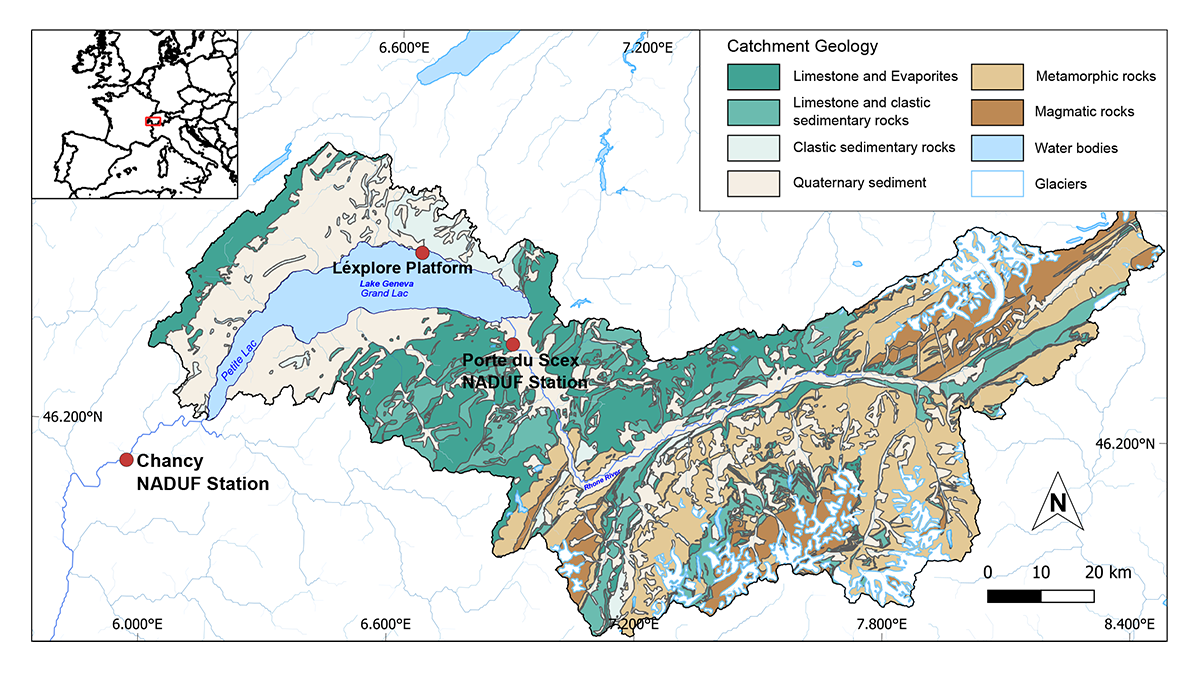Editors’ Highlights are summaries of recent papers by AGU’s journal editors.
Source: Journal of Geophysical Research: Biogeosciences
“Le Léman”, Lake Geneva, is the title and subject of F.-A. Forel’s seminal book series (1892-1904) that examines its catchment, climate, organisms, and solutes such as carbon and organic matter (OM), essentially establishing “limnology” as a holistic freshwater science. At the time, Forel wondered whether it was possible to fully understand the dynamics of organic material in the lake’s water, given that the influencing factors were so complex, and the variation in concentration so small. Today, we have detailed knowledge about the aquatic carbon cycle, but because much of this comes from the study of smaller and organic-rich northern lakes, it is still uncertain what actually applies to lakes of Geneva’s type.
Adding a piece to this longstanding puzzle, White et al. [2025] analyze the spatiotemporal dynamics of organic and inorganic (radio-)carbon dissolved in Lake Geneva and its biggest tributary, the Rhone. Using detailed data on the carbon composition and age, the researchers substantiate that organic carbon (OC) is primarily sourced from the lake’s large inorganic carbon (IC) pool by photosynthesizing plankton, rather than being imported from catchment soils and vegetation.
However, the authors also find exceptions to this rule. Glacial meltwater bears a characteristic signature of old organic matter and young IC that revealed large carbon imports to the lake during the record heat of 2022. Quantitative understanding of such inflows is important for comprehending the functioning of lakes in a warming alpine region. In the future, glaciated catchments will reach “peak water”, after which the receding glaciers contribute less and less to summertime streamflow, potentially exporting from former glaciated/permafrost areas more soil-derived OC, nutrients and also more IC.
These results also coincide with a renewed interest in lakes’ IC dynamics and associated calcite precipitation. During past investigations of terrestrial exports of carbon and energy, hardwater lakes were largely overlooked. Due to the simultaneous CO2 and calcite (CaCO3) formation by plankton (owed to the precipitation stoichiometry), hardwater lakes can become counterintuitive aquatic greenhouse gas sources. Better knowledge about the carbon sinks and sources there, as provided by the authors, consolidates the mechanisms active in similar, numerous and ecologically important peri-alpine lakes. Surely, Forel would approve.
Citation: White, M. E., Mittelbach, B. V. A., Escoffier, N., Rhyner, T. M. Y., Haghipour, N., Janssen, D. J., et al. (2025). Seasonally dynamic dissolved carbon cycling in a large hard water lake. Journal of Geophysical Research: Biogeosciences, 130, e2024JG008645. https://doi.org/10.1029/2024JG008645
—Maximilian Lau, Associate Editor, JGR: Biogeosciences

